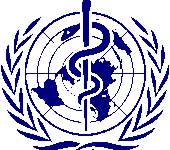
The Strategic Advisory Group of Experts (SAGE) on Immunization, which advises WHO on policies and strategies for vaccines and immunization, devoted a session of its 27–29 October meeting to pandemic influenza vaccines. The experts reviewed the current epidemiological situation of the pandemic worldwide and considered issues and options from a public health perspective.
Items on the agenda included the status of vaccine availability, results from clinical trials on vaccine immunogenicity, and early results from safety monitoring in countries where administration of the H1N1 pandemic vaccine is currently under way.
The experts also advised WHO on the number of doses of vaccine needed to confer protection, also in different age groups, the co-administration of seasonal and pandemic vaccines, and vaccines for use in pregnant women. Recommendations on the formulation of seasonal influenza vaccines for the southern hemisphere in 2010 were also provided.
Current situation
Globally, teenagers and young adults continue to account for the majority of cases, with rates of hospitalization highest in very young children. Between 1% to 10% of patients with clinical illness require hospitalization. Of hospitalized patients, from 10% to 25% require admission to an intensive care unit, and from 2% to 9% have a fatal outcome.
Overall, from 7% to 10% of all hospitalized patients are pregnant women in their second or third trimester of pregnancy. Pregnant women are ten times more likely to need care in an intensive care unit when compared with the general population.
Based on these and other current findings, the experts made a number of recommendations.
Dosage
The experts noted that a variety of pandemic vaccines, including live attenuated and both adjuvanted and non-adjuvanted inactivated vaccines, have now been licensed for use by regulatory authorities. SAGE recommended the use of a single dose of vaccine in adults and adolescents, beginning at the age of 10 years, provided such use is consistent with indications from regulatory authorities.
Data on immunogenicity in children older than 6 months and younger than 10 years are limited and more studies are needed. Where national authorities have made children a priority for early vaccination, SAGE recommended that priority be given to the administration of one dose of vaccine to as many children as possible. SAGE further stressed the need for studies to determine dosage regimens effective in immunocompromised persons.
Co-administration of vaccines
Clinical trials investigating the co-administration of seasonal and pandemic vaccines are ongoing, but SAGE acknowledged the recommendation, from the US Centers for Disease Control and Prevention, that live attenuated seasonal and live attenuated pandemic vaccines should not be co-administered.
The experts recommended that seasonal and pandemic vaccines can be administered simultaneously, provided both vaccines are inactivated, or one is inactivated and the other is live attenuated. The experts found no evidence that co-administration of vaccines, as recommended, would increase the risk of adverse events.
Vaccine safety
The experts reviewed early results from the monitoring of people who have received pandemic vaccines and found no indication of unusual adverse reactions. Some adverse events following vaccination have been notified, but these are well within the range of those seen with seasonal vaccines, which have an excellent safety profile. Although early results are reassuring, monitoring for adverse events should continue.
Vaccines for pregnant women
Concerning vaccines for pregnant women, SAGE noted that studies in experimental animals using live attenuated vaccines and non-adjuvanted or adjuvanted inactivated vaccines found no evidence of direct or indirect harmful effects on fertility, pregnancy, development of the embryo or fetus, birthing, or post-natal development.
Based on these data and the substantially elevated risk for a severe outcome in pregnant women infected with the pandemic virus, SAGE recommended that any licensed vaccine can be used in pregnant women, provided no specific contraindication has been identified by the regulatory authority.
Vaccines for the southern hemisphere in 2010
SAGE also considered vaccines for use in the southern hemisphere during the 2010 winter season. Two options were assessed: a trivalent vaccine, effective against the H1N1 pandemic virus, the seasonal H3N2 virus, and influenza B viruses, and a bivalent seasonal vaccine, effective against H3N2 and influenza B viruses, which might need to be supplemented with a separate monovalent H1N1 pandemic vaccine.
The experts concluded that both options should remain available for vaccine formulations in the southern hemisphere, subject to national needs.
30 OCTOBER 2009 GENEVA

